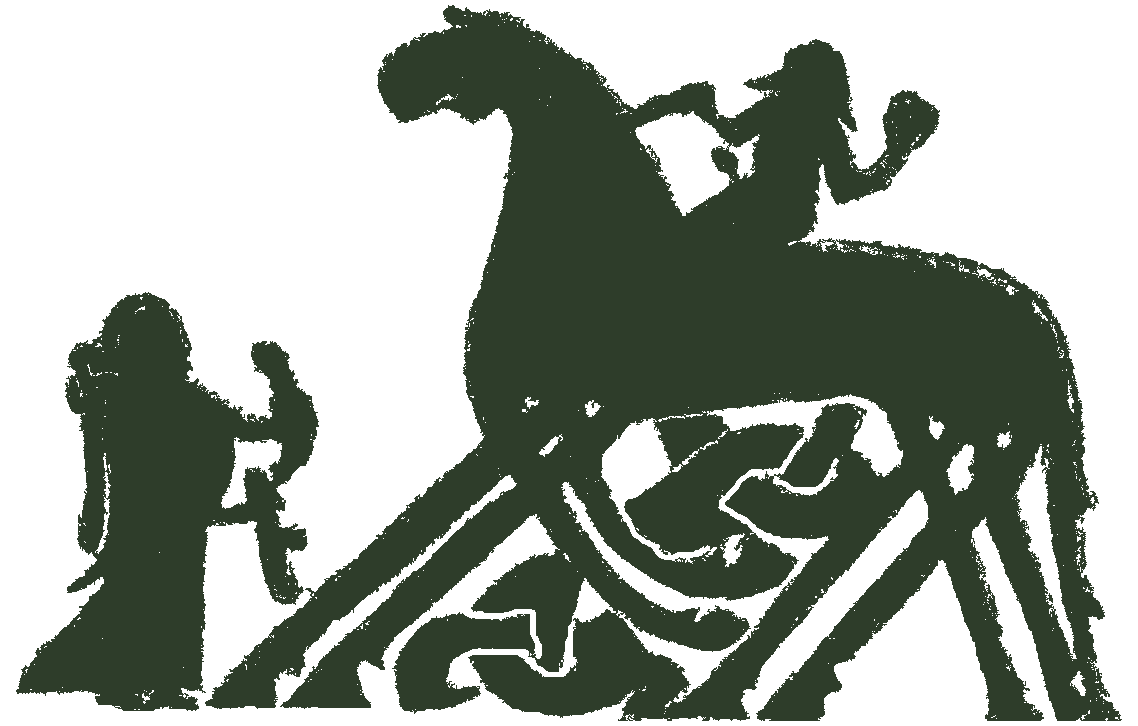in progress
This section of Gylfaginning contains a description of the godess Hel, the ruler of the realm of the dead.
text
[excerpt from] Gylf ch. 34c
34c. Hel
Hel kastaði hann í Niflheim o... | Hel he threw into Niflheim an... |
[status: unverified copy]
commentary
context
Gylfaginning, which is part of Snorra Edda, was composed in Iceland in the 13th century, and holds the stories of many of the Pre-Christian myths of northern Europe. It is believe to have been composed by the Icelander Snorri Sturlusson. Snorra Edda consists of three separate parts, Gylfaginning, Skaldskápamáland Háttatal, all functioning together as a greater work and guide for the aspiring medieval poet and storyteller.
commentary
Hel is the goddess of death. A personification of Hel, the underworld of death, often found in kennings for the underworld. Examples are found in Völuspá 43: ON: salar Heilar, EN: “halls of Hel,” and Baldrs draumar 2: ON: rann Heilar, EN: house of Hel. Snorri describes Hel as the daughter of Loki, sister of Miðgardsormur and Fenrir. Evidence suggests that the personification of the realm Hel as the goddess is younger (10th century and after) and possible Christian influence and therefore not a true pre-Christian belief of a deity. However, the evidence of Hel as a realm of the dead who have died from illness and old age is evident on pre-Christian Germanic mythology. Furthermore, the female character of Hel as a goddess of the underworld may be connected to the ideas of death and eros, where the ideas of fate and death is symbolised by the embrace of the female lover waiting to welcome the rulers among the living, another aspect of the ideals of hieros gamos, the holy wedding and union representing power.
For more, see for example:
Ellis Davidson, H. R, (1990), Gods and Myths of Northern Europe. London: Penguin Books. pp. 162.
Ellis Davidson, H. R. (1943), The Road to Hel. Cambridge: Cambridge University Press.
Simek, Rudolf (2007), Transl: Angela Hall. Dictionary of Northern Mythology. Cambridge: D.S. Brewer. pp. 137-138.
Steinsland, G. (2005), Norrøn Religion. Myter, Riter, Samfunn. Oslo: Pax Forlag. pp. 230-231, 338, 347-349.
Steinsland, G. (1997), Eros og død i norrøne myter. Oslo: Universitetsforlaget.
(Contributed by Liv Marit Aurdal.)
tags
Main text: Gylfaginning
Attributes: Female Hall Death Nine
Named things:
Text sections: SnSt Gylf 34cIII
